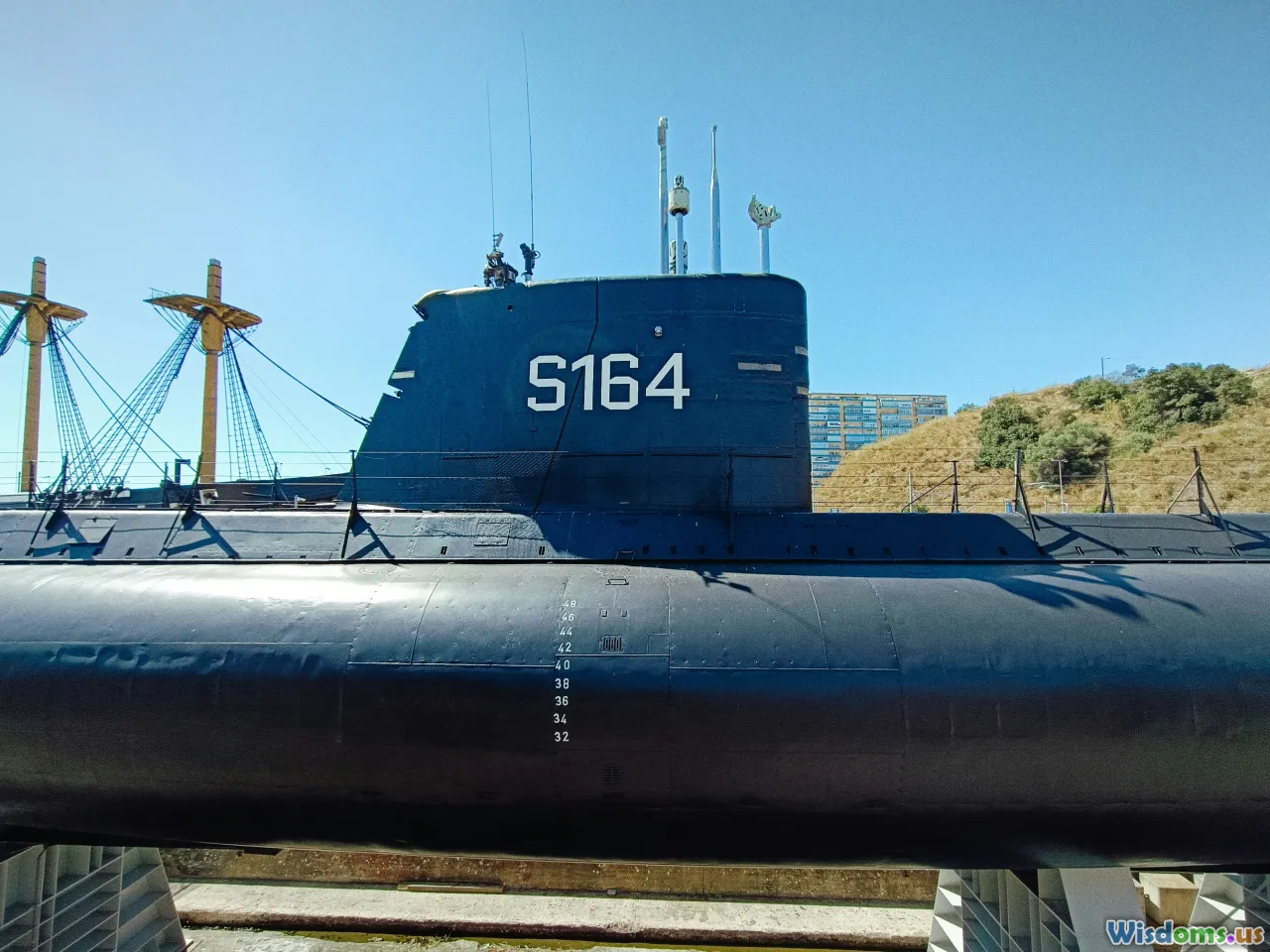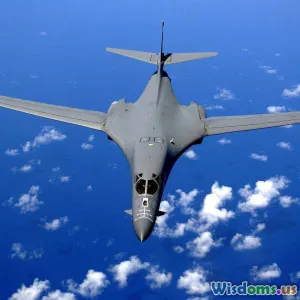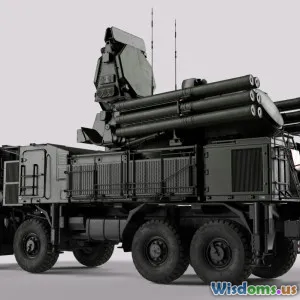
Are Autonomous Torpedoes a Threat to Submarine Warfare
14 min read Discover how autonomous torpedoes are transforming submarine warfare, analyzing threats, technology, and future implications for underwater defense strategies. (0 Reviews)
Are Autonomous Torpedoes a Threat to Submarine Warfare?
Introduction: The Silent Revolution Underwater
In the silent, shadowy depths of the world’s oceans, a new arms race is erupting. Submarines—long considered the pinnacle of clandestine naval warfare—once ruled the underwater domain with the advantage of stealth and advance warning. But as artificial intelligence and autonomy revolutionize weapons technology, a new predator is on the hunt: the autonomous torpedo.
Imagine a torpedo that can search, stalk, decide, and strike—without human intervention—potentially hours or days after its launch. Autonomous torpedoes are not the stuff of distant science fiction; prototypes and operational models are already testing militaries’ ability to hide and survive beneath the waves. Does this mean the age of the stealthy submarine is drawing to a close? Or can submarine warfare adapt to face the threat posed by their AI-enabled mechanical adversaries?
This article dives deep into the implications of autonomous torpedoes for submarine warfare, breaking down their origins, capabilities, actual deployments, and the fast-changing strategies submariners and weapons designers are adopting in response.
The Evolution of Torpedo Technology
From Human Control to Algorithmic Autonomy
Traditionally, torpedoes relied on onboard sensors and basic logic for target detection, often employing acoustic homing new close-range attack. Human operators would set target parameters, then "fire-and-forget."
However, the last decade has seen computer science meld with naval engineering. Modern torpedoes, such as the U.S. Navy’s Mark 48 Advanced Capability (ADCAP), employ far more sophisticated targeting algorithms, differentiating decoys from genuine threats. Yet even these still rely on pre-set instructions and limited decision-making.
Autonomous torpedoes break that paradigm. They use real-time data processing, adaptive navigation, and even communications relays to adjust course, tactics, and search patterns far beyond any simple logic. For example, the work by BAE Systems and Saab on next-generation underwater weapons is said to integrate machine learning for target recognition and route selection, all while evading enemy countermeasures much like a submarine itself.
"We’re arriving at a point where torpedoes are not just an extension of a ship's will, but separate, thinking hunters in their own right." – Dr. Harlan Lewis, Naval AI Researcher, 2020
Key Technologies and Capabilities
- AI-Based Targeting: Autonomous torpedoes can identify, prioritize, and learn about new targets, applying advanced sensor fusion and machine learning from preloaded data and real-time observation.
- Persistent Search: Capable of lying in wait, reconnoitering areas, or patrolling set routes for longer durations due to improved energy efficiency and decision-making autonomy.
- Networked Coordination: They may communicate with other torpedoes, unmanned vehicles, or sensors distributed across the seafloor, conducting wolf-pack tactics reminiscent of anti-submarine warfare in WWII—only much smarter and faster.
- Counter-countermeasures: AI allows these weapons to respond to traditional decoys and anti-torpedo tactics with unpredictable, adaptive behavior.
Real-World Deployments and Prototypes
Who is Developing Autonomous Torpedoes?
Many naval powers are investing heavily in these technologies:
- United States: DARPA and the Office of Naval Research are leading classified projects exploring AI-enabled underwater munitions, publicly referencing "Cognitive Autonomous Weapons Systems."
- Russia: The Poseidon unmanned underwater vehicle, described by Russian officials as a "doomsday torpedo", reportedly travels autonomously for thousands of miles, guided by AI to evade detection and carry a nuclear payload.
- China: The PLAN (People’s Liberation Army Navy) regularly demonstrates smart torpedoes in exercises, with rumors of advanced underwater drones capable of launch-and-recover torpedo attacks.
- Europe: Collaborative projects between the UK, Sweden, and Germany include AI navigation, swarm capabilities, and enhanced sensor suites for mine-hunting and torpedo warfare.
Case Study: The Russian Status-6 "Poseidon"
Perhaps the world’s most controversial example is Russia’s Poseidon, a 24-meter, nuclear-powered autonomous torpedo (also categorized as an unmanned underwater vehicle). Announced by President Vladimir Putin in 2018, its alleged capabilities stunned Western observers:
- Range: Inter-continental (>6,000 miles)
- Payload: Up to a 100-megaton nuclear warhead
- Autonomy: Able to navigate around obstacles, evade anti-submarine nets, and adapt to environmental conditions without orders.
Although some Western analysts question whether Poseidon is a deployable reality or propaganda, its public unveiling alone signals how seriously global militaries view the autonomous underwater threat.
Why Are Submarines Suddenly Vulnerable?
Erosion of Stealth Advantages
Submarines survive by being undetected, but autonomous torpedoes could upend this fundamental principle:
- Persistent Search Patterns: Instead of racing towards a sonar contact, these torpedoes can methodically sweep search zones, waiting quietly in likely transit areas or covering probable choke points.
- AI-Driven Decoy Discrimination: Traditional defensive countermeasures, like noise-makers or dummy submersibles, are less effective against torpedoes able to distinguish real targets through adaptive pattern recognition.
- Wolf-Pack Attacks: Networked torpedoes can surround a suspected submarine, share detection data, and enact coordinated attacks, effectively outmaneuvering a lone submarine.
Overcoming the "Noise" Route
Submarines avoid detection by hiding under natural ocean thermal layers or moving in cluttered acoustic environments. However, machine-learning equipped torpedoes utilize algorithms to filter out clutter and identify the faint signatures of true subsurface targets.
In 2023, an underwater exercise off the coast of Norway featured a prototype NATO AI-enabled torpedo successfully tracking and tagging exercise submarines traversing complex fjords—something that had routinely foiled advanced manned torpedoes in prior simulations.
Long-Duration Area Denial
Some autonomous torpedoes now function more like mines, able to loiter in an area for days or weeks, only activating when a qualifying submarine signature enters their range. This persistence creates psychological and operational stress for subsurface crews, always uncertain of where or when such a weapon might strike.
How Submarine Forces Are Responding
Reinventing Defensive Measures
Despite the technological arms race, submarine designers and tacticians are far from helpless. Some key strategies under exploration and development include:
- Submarine Stealth Redux: Advanced sound-dampening techniques, variable geometry propellers, and even AI-assisted silent running protocols aim to push detectability thresholds lower than what autonomous sensors can reliably parse.
- Active Decoy Networks: Deploying swarms of programmable decoys and drones that mimic submarine behaviors, pattern-matching the confusing tactics autonomous torpedoes use to identify prey.
- Counter-Torpedo Torpedoes: Simple interceptors, already used by U.S. and U.K. submarines, are being enhanced with AI to recognize, pursue, and neutralize autonomous threats mid-approach.
- Submarine-Launched Unmanned Vehicles (UUVs): These can serve as sacrificial scouts, detect and distract incoming autonomous weapons, or even hunt and disable them with EMP (electromagnetic pulse) or kinetic strikes.
Example: The U.S. Navy's Snakehead XLUUV
The U.S. is fielding advanced Extra-Large Unmanned Underwater Vehicles (XLUUVs), such as the Snakehead, to work alongside submarines, performing reconnaissance and counter-autonomous-weapon-infiltration measures, demonstrating the blending future of mansub and autonomous underwater warfare.
"We’re inventing new rules beneath the waves, and expect no static front lines between hunter and hunted in the unmanned era." – Rear Admiral Cedric Felgenheimer, USN, Annual Seapower Symposium 2022
Ethical and Strategic Implications
The Dilemma of Machine Killing Power
Fully autonomous weapons—especially potentially nuclear-armed platforms like Poseidon—raise profound ethical questions. The possibility of accidental launches, unintended escalation, or weapons falling out of human control is no longer abstract.
The United Nations Convention on Certain Conventional Weapons has convened expert panels on "Lethal Autonomous Weapons Systems", though reaching consensus among major military powers has proven elusive. The prospect of underwater AI-enabled warfare is largely unregulated, making it a ripe ground for both innovative leaps and catastrophic misjudgments.
Escalation in Undersea Arms Race
If autonomous torpedoes become the norm:
- First-Strike Temptations: Nations may feel pressured to launch pre-emptively if they suspect a foe’s weapons are beyond recall.
- Deterrence Instability: Unpredictability of machine decision-making complicates traditional nuclear and conventional deterrence theory, analogous to how hypersonic glide vehicles stress current missile defense systems.
- Global Proliferation: As production costs fall and dual-use AI technology proliferates, more nations and potentially even non-state actors could develop such capabilities, rendering strategic submarines less survivable, and thus less effective as assured deterrent forces.
The Future: A Cohabitation of Man and Machine?
Survival in the Autonomous Era
While the threat is severe, most experts agree submarines will endure as core assets—just radically evolved. The game will shift towards electronic warfare, counter-AI tactics, stealth innovation, and perhaps even underwater cyberwarfare.
- AI vs. AI: Submarines may deploy their own autonomous sentinels to run interference against hunting torpedoes, leading to escalating levels of machine-versus-machine strategy below the waves.
- Multi-Domain Coordination: Survivability might hinge on rapid coordination between submarines, surface ships, aircraft, space assets, and undersea networks—the “macro-networked ocean battlefield.”
Vision: Undersea Manned-AI Warfare by 2040
By 2040, it’s likely that:
- Submarines will routinely launch and command swarms of their own unmanned systems.
- Human crews will focus more on supervising and command, less on direct sensors/weapons operation.
- Contests will hinge on who applies AI, autonomy, and counter-autonomy most creatively rather than just who builds the quietest hull or biggest torpedo.
Conclusion: A Perilous New Underwater Frontier
Autonomous torpedoes are undeniably changing the calculus of submarine warfare, reducing the relative safety of operating unobserved beneath the waves and forcing navies into an era of relentless technical adaptation. The ocean’s darkness is now lit by the neural glint of countless AI eyes—and the strategic race is less about steel and propellant, and more about code, sensors, and decision-making speed.
But these weapons are not the “end of submarines.” Rather, they are the start of a new contest—one that will reward innovation, agility, and ethical wisdom as much as brute force. For military planners, technologists, and policymakers, the autonomous torpedo threat is both a cautionary tale and an urgent call to shape how the wars (and peace) of tomorrow are waged beneath the sea.
**Further Reading: **
- “The AI Undersea: Ethics and Escalation in Unmanned Warfare,” Naval War College Review, 2023
- “Cross-Domain Operations and the Future of Submarine Survivability,” RAND Corp, 2022
- “Autonomous Weapons and the Future of Naval Power,” Center for Strategic and International Studies, 2024
Rate the Post
User Reviews
Popular Posts















